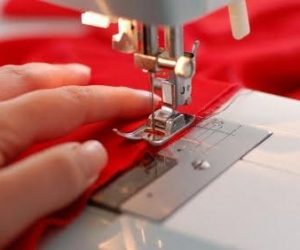Do you know who made the clothes you’re wearing? Do you even know the country they were made in? When it comes to ethics, more and more of us want to know where our clothes were made, what were the conditions like for the workers and was any exploitation involved. We also want to know that the fabric used in our clothing is sourced using sustainable and environmentally friendly methods. If you have bought your Mini Dresses from a business like Umay they will be happy to tell you where they are from and even have their own fashion designer on site.
Dressmaking is becoming a much more popular hobby again. It’s a massively rewarding activity and a skill that not many people can claim any more.
If you’re new to dressmaking, here are some tips to help you get started:
There are a few essentials you’ll need including access to a sewing machine, thread, needles, seam ripper, tape measure, iron, fabric scissors and dressmakers chalk. You don’t have to buy a sewing machine, see if you have friends or family you can borrow from. If you do buy one, an entry level should suffice for beginners and second-hand is always an option.
Spend some time learning every feature of your machine, read the manual and practice on some fabric scraps before you start a project. You’ll find a wealth of video tutorials on YouTube which can be really useful. Knowing how to read patterns in another skill you’ll want to develop. Don’t rush, put the kettle on and read through everything step-by-step before you start sewing. You’ll find loads of definitions and helpful guides to patterns online.
Start with a pattern that’s marked as ideal for beginners. At this stage you don’t want to feel confused, frustrated or stress-out. Consider investing in some sewing magazines which are perfect for beginners and often come with a free gift! The free patterns are often ideal for sewing newbies and the magazine team are on hand for any queries or questions.
You’ll get advice on what fabric to use from the pattern itself and also information of how much fabric is required, so you won’t need to make any guesses or estimations. If you need to convert any measurements from imperial to metric or vice versa, it’s easy just to Google it!
When you start out, it’s best to avoid patterns that require accurate matching, such as those that use highly patterned fabric or anything with stripes. This is a skill that you’ll pick up as you gain more experience.
Another essential piece of advice for those new to sewing is that before cutting into any fabric, especially expensive fabric, create a voile with cheap or spare fabric first. A voile is a practice test garment, so you can check you’re cutting the correct size before doing it on the real thing. This will give you more confidence when it comes to cutting up the expensive material.


